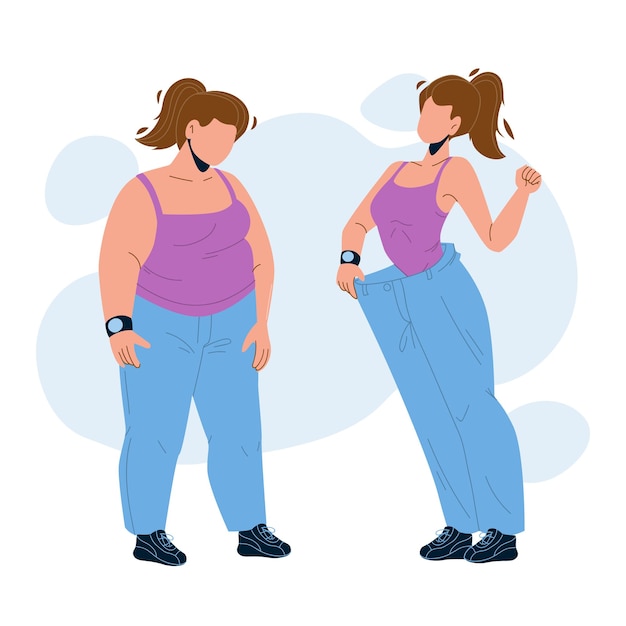
The Science of Female Fat Loss: What Every Woman Must Know
Female fat loss is not just about diet and exercise—it is a complex interaction of hormones, metabolism, lifestyle, and training science. Women often struggle with fat loss more than men, not because they work less hard, but because their physiology is designed differently. Understanding this science is the key to unlocking real, permanent results.
---
1. Why Female Fat Loss Is Different
Women naturally store more body fat than men (10–12% more on average). This is due to:
• Estrogen
Promotes fat storage around hips, thighs, and glutes.
Slows down the breakdown of fat during exercise.
• Lower Resting Metabolic Rate
Women burn 10–15% fewer calories at rest compared to men of the same body weight.
• Menstrual Cycle Changes
The monthly cycle affects:
Cravings
Water retention
Energy levels
Fat oxidation
Understanding the cycle helps women train smarter, not harder.
---
2. The Menstrual Cycle and Fat Loss
The cycle is divided into two main phases:
① Follicular Phase (Day 1–14) – Best for Fat Loss
Estrogen rises steadily; energy is higher.
Insulin sensitivity improves → better for high-intensity training.
Best workouts:
HIIT, strength training, heavy lifts, sprints.
Why?
The body uses carbs more efficiently and recovers faster.
---
② Luteal Phase (Day 15–28) – Slow Fat Loss
Progesterone increases → appetite rises.
Body temperature increases → more fatigue.
Cravings for sugar and carbs increase.
Best workouts:
Moderate-intensity cardio, functional workouts, yoga, technique training.
Goal: Maintain consistency, not break records.
---
3. Why Women Lose Fat From the Stomach Last
Due to estrogen and receptor distribution:
Lower body (hips & thighs) has more Alpha-2 receptors → block fat burning.
Upper body has more Beta-2 receptors → easier fat loss from arms/waist.
This is why “lower belly + hips + thigh fat” takes longer to reduce.
---
4. Diet Science for Female Fat Loss
Fat loss for women follows one rule:
Calorie Deficit + High Protein + Hormonal Balance
Protein:
Women need 1.6–2.2 g per kg body weight for lean muscle and fat burning.
Protein increases metabolism through the Thermic Effect of Food (TEF).
Carbs:
Carbs are not the enemy. They maintain:
Thyroid hormone
Energy production
Hormone balance
Choose complex carbs: oats, whole grains, fruits, vegetables.
Fats:
Healthy fats support estrogen balance and fat metabolism.
Use ghee, olive oil, nuts, seeds.
---
5. Strength Training: The Real Key for Women
Women often avoid weights, but science shows:
Strength training increases:
Metabolism
Fat oxidation
Muscle tone
Hormonal balance
Important fact:
Women do not get bulky naturally because they have 10–15 times less testosterone.
---
6. Cardio vs. Strength: What Works Better?
Strength Training → Fat Loss (Long-Term)
Boosts metabolism for 24–48 hours.
Cardio → Fat Loss (Short-Term)
Burns calories during the workout only.
Best strategy:
Combine both:
3–4 days strength
2 days cardio
1 day active recovery
---
7. Common Mistakes Women Make
❌ Very low-calorie diets
❌ Excessive cardio
❌ Skipping protein
❌ Cutting carbs completely
❌ Not training during periods
❌ Stress eating & poor sleep
These mistakes slow metabolism and increase fat storage.
---
8. Role of Stress & Sleep
High stress increases cortisol, which stores fat around the stomach.
Sleep less than 6 hours:
increases cravings
reduces leptin (fat burning hormone)
increases ghrelin (hunger hormone)
Women require 7–9 hours for optimal fat loss.
---
9. Supplements That Support Female Fat Loss
(Not magic, but supportive.)
Protein powder – muscle recovery
Omega-3 – reduces inflammation
Green tea extract – increases metabolism slightly
Vitamin D3 + K2 – hormone support
Magnesium – reduces PMS cravings
Ashwagandha – lowers cortisol
(Always take under expert guidance.)
---
10. The Real Science of Sustainable Fat Loss
Female fat loss is successful when you follow:
✔ Smart training (cycle-based)
✔ High protein + balanced diet
✔ Proper sleep
✔ Low stress
✔ Strength training as the foundation
✔ Realistic expectations
Fat loss is gradual—0.5 to 1 kg per week is healthy.
